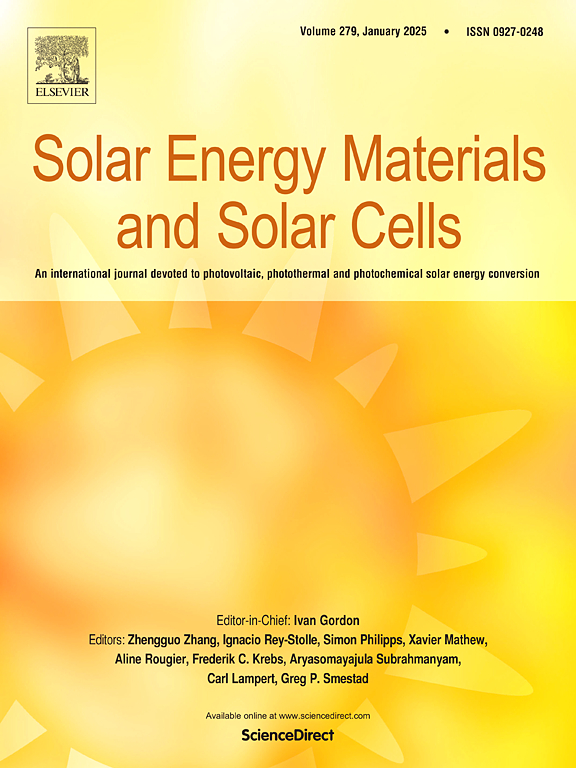Advanced graphene metamaterial design for high-efficiency terahertz wave absorption
IF 6.3
2区 材料科学
Q2 ENERGY & FUELS
引用次数: 0
Abstract
Graphene is extensively used in photonic devices due to its various unique and extraordinary characteristics that are not familiar in conventional materials, especially its high electron mobility, ultra-thin width, functionality of integration, and excellent conductivity. In present investigation, we demonstrated a patterned graphene-based terahertz (THz) metamaterial absorber with combination of different materials, gold, silicon, stacked graphene, polymethyl methacrylate and strip patterned graphene layers, all differentiated by insulating dielectric layer. According to simulation results, this THz broadband absorber demonstrated polarization, electromagnetic field interaction, angle insensitive properties and almost perfect broadband absorption. The base of a structure is composition of various materials stacking on one another. The proposed absorber described more than 95 % absorption from 3.0 to 10 THz, 98.5 % maximum absorption at 7.1 THz and 97.6 % average absorption for 7.0 THz bandwidth. The structure has a decent bearing angle in a wide range of 0°–70° and has angle insensitive s- and p-polarization. Additionally, by modifying the layers and geometrical parameters, the absorption properties can be refined. This suggested absorber can be used in optoelectronic devices, photodetectors, and photosensors based on aforementioned findings.

高效吸收太赫兹波的先进石墨烯超材料设计
石墨烯以其高电子迁移率、超薄宽度、集成功能和优异的导电性等传统材料所不具备的各种独特和非凡的特性,在光子器件中得到了广泛的应用。在本研究中,我们展示了一种基于图案化石墨烯的太赫兹(THz)超材料吸收器,它由不同的材料组合而成,包括金、硅、堆叠石墨烯、聚甲基丙烯酸甲酯和条状图案化石墨烯层,它们都通过绝缘介电层来区分。仿真结果表明,该太赫兹宽带吸收材料具有极化、电磁场相互作用、角度不敏感等特性,具有近乎完美的宽带吸收特性。结构的基础是各种材料相互堆叠的组合。在3.0 ~ 10thz波段,吸光度达到95%以上,在7.1 THz波段最大吸光度达到98.5%,在7.0 THz波段平均吸光度达到97.6%。该结构在0°- 70°的宽范围内具有良好的承载角,并且具有角不敏感的s极化和p极化。此外,通过改变层数和几何参数,可以改善吸收特性。基于上述发现,该吸收剂可用于光电器件、光电探测器和光电传感器。
本文章由计算机程序翻译,如有差异,请以英文原文为准。
求助全文
约1分钟内获得全文
求助全文
来源期刊

Solar Energy Materials and Solar Cells
工程技术-材料科学:综合
CiteScore
12.60
自引率
11.60%
发文量
513
审稿时长
47 days
期刊介绍:
Solar Energy Materials & Solar Cells is intended as a vehicle for the dissemination of research results on materials science and technology related to photovoltaic, photothermal and photoelectrochemical solar energy conversion. Materials science is taken in the broadest possible sense and encompasses physics, chemistry, optics, materials fabrication and analysis for all types of materials.
 求助内容:
求助内容: 应助结果提醒方式:
应助结果提醒方式:


